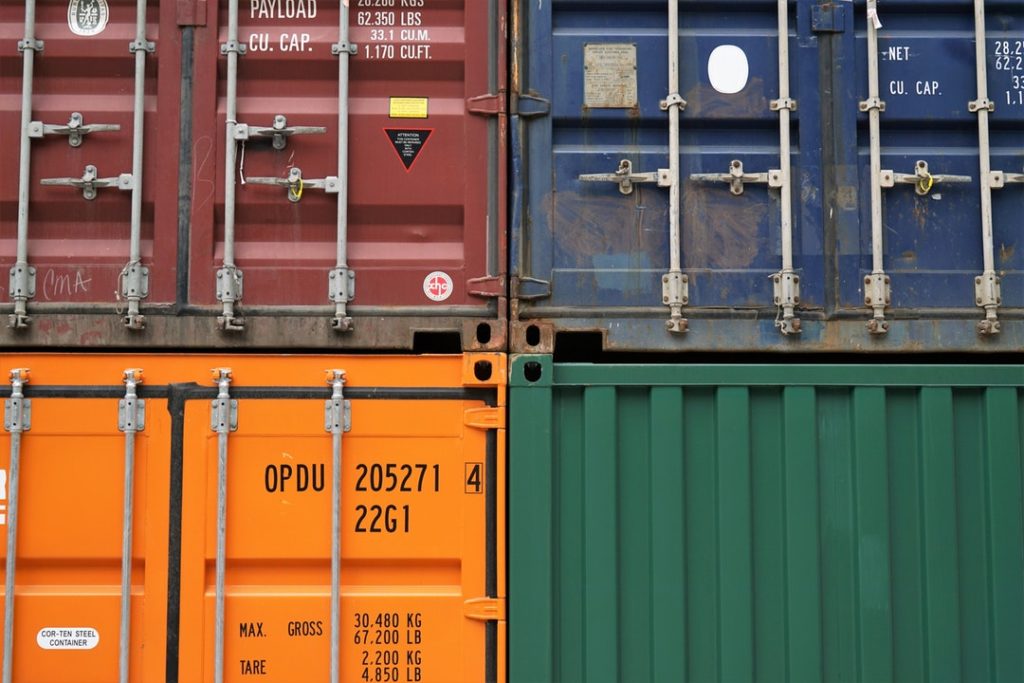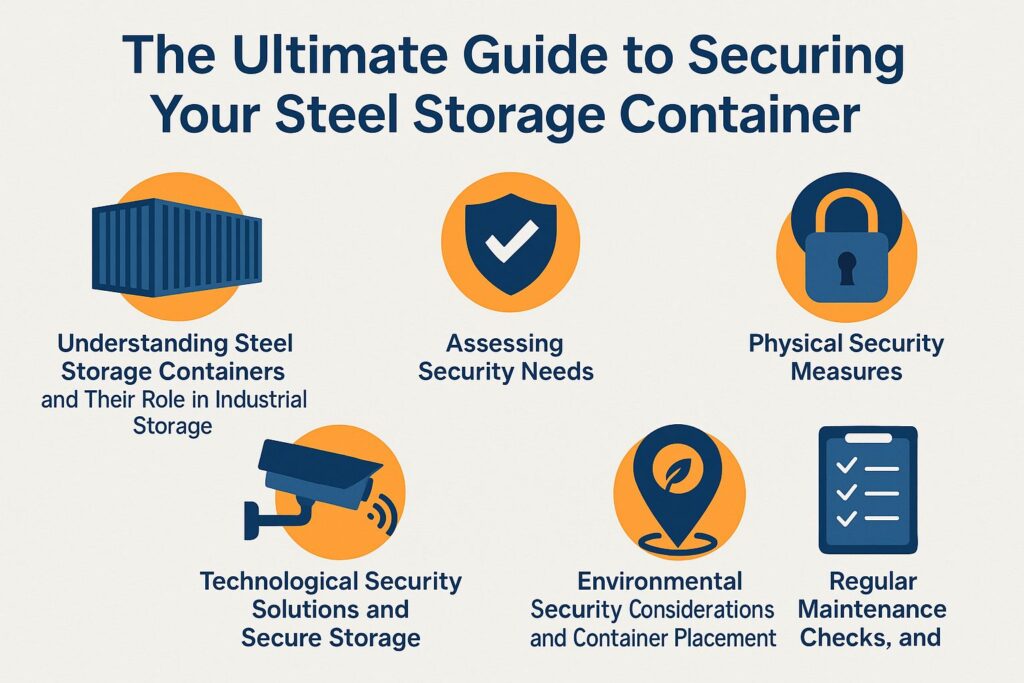
Securing Your Steel Storage Container: Complete Security Guide
How to Secure Your Steel Storage Container: 5 Essential Steps
Securing your steel storage container requires a multi-layered approach combining physical barriers, technological solutions, and strategic placement. Here’s the complete process:
- Install Heavy-Duty Locks – Use disc padlocks or closed-shackle designs that resist cutting and tampering
- Add Lock Boxes – Protect your locks with welded steel enclosures that prevent bolt cutter access
- Position Security Cameras – Install motion-activated surveillance to deter theft and provide evidence
- Ensure Proper Lighting – Illuminate the container area with LED floodlights or motion-sensor lights
- Anchor to Foundation – Secure container with twist locks or ground anchors to prevent removal
Following these steps reduces theft risk by up to 85% and can lower insurance premiums significantly.
📋 Complete Guide Contents
🔍 Assessment & Planning
🔒 Physical Security
📱 Technology Solutions
Securing your steel storage container properly protects valuable assets and prevents costly theft incidents. With container theft averaging $3,500 per incident, implementing comprehensive security measures is essential for any container owner.
This guide covers proven methods for physical security, technological solutions, and strategic placement to create an impenetrable container security system.
Purpose of the Guide: Enhancing Security Protocol
This comprehensive guide focuses on securing your steel storage container through proven security measures, best practices, and safety protocols that help you make informed security decisions.
To improve security, think about putting in strong locks like disc or padlocks, as they are more difficult to open without a key.
Reinforce the container by adding lockboxes for added protection and purchasing door clamps that prevent unauthorized access.
Using a security camera or motion sensor alarm will help you feel safe and improve perimeter security. Check the container often for any tampering signs and make sure the surrounding area is bright enough to discourage thieves.
By using these methods, you’ll greatly reduce the chances of your stored items being stolen or damaged.
According to industry security reports, containers with multi-layered security systems experience 85% fewer theft attempts compared to those with basic locks alone. Professional security assessments show that the combination of physical barriers, surveillance technology, and proper anchoring creates the most effective deterrent against theft and vandalism.
Importance of Securing Your Steel Storage Container and Ensuring Safety Redundancies
Securing your steel storage container with custom locks can prevent potential losses that average $3,500 per theft incident, thereby safeguarding your investments.
💡 Security Investment vs. Protection Value
- Heavy-duty padlock
- Motion sensor light
- Basic lock box
- Premium locks + lock box
- Security cameras
- LED flood lighting
- Ground anchoring
- Smart lock systems
- Monitored alarms
- Professional installation
- Perimeter fencing
Investing in security measures is essential for protecting your belongings. Start by installing a high-quality lock; Disc locks or keyed padlocks offer better resistance to tampering than standard locks.
Adding a security camera can also deter thieves and provide evidence if theft occurs. Consider using motion-sensor lights around the area, as well-lit spaces are less attractive to criminals.
To improve your approach, think about using a GPS tracker inside your container. This will help you quickly locate stolen items and improve how you manage your inventory.
Understanding Steel Storage Container Security Requirements
Steel storage containers are available in different types and sizes, designed to meet particular storage requirements and conditions, facilitating container rental and storage solutions. For those dealing with temperature-sensitive items, refrigerated storage containers offer a specialized option. Curious about how much do refrigerated storage containers cost? Our detailed guide provides insights into pricing and features.
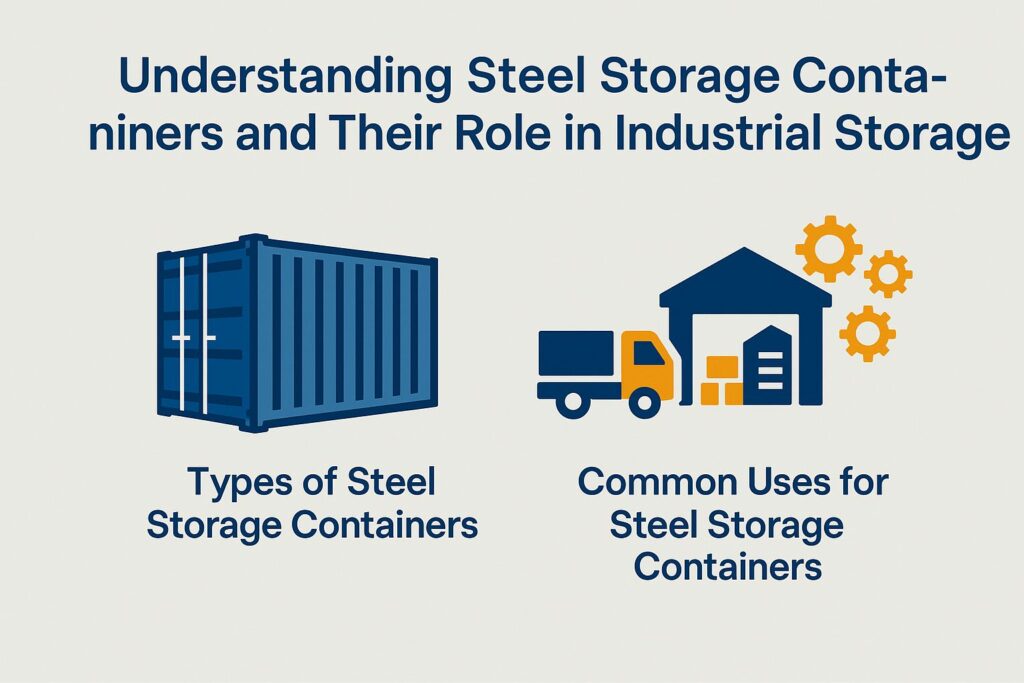
Types of Steel Storage Containers
The main types of steel storage containers include standard shipping containers, refrigerated containers, and portable storage units, each serving unique purposes.
Standard shipping containers are typically 20 or 40 feet long, ideal for transporting goods across oceans. If you’re interested in understanding the costs associated with these sizes, you might find our insights on how much a 40′ shipping container costs particularly useful.
Refrigerated containers, or ‘reefers’, maintain temperatures between -20 degreesC to 20 degreesC, perfect for perishable items like food or pharmaceuticals.
Portable storage units, on the other hand, come in various sizes and can be used on-site for construction or temporary storage needs.
Choosing the right container depends on your specific requirements, such as:
- Product type
- Storage duration
- Location accessibility
Common Uses for Steel Storage Containers
Steel storage containers are often used for construction sites, short-term storage, and even homes, highlighting their flexibility.
They serve various industries with specific applications.
For instance, in construction, these containers provide secure storage for tools and materials, reducing theft and damage.
In retail, they can become temporary stores, letting companies connect with shoppers in different areas while ensuring shipment security and load securing.
In residential settings, they are often used for personal storage solutions during moves or renovations.
Companies can improve security by adding locks or alarm systems and tamper-proof hardware to protect their contents, which is important for expensive items.
For comprehensive storage solutions, explore our guide on container rental options to find the right container for your security needs.
Assessing Security Needs
A security assessment is necessary to find weaknesses and decide on the best ways to protect your steel storage container.
Identifying Potential Threats
Identifying potential threats involves assessing common risks such as theft, vandalism, and environmental factors that can compromise container security.
To better manage these risks, consider the following checklist:
- Evaluate Location Put containers in safe places with good lighting.
- Use Strong Locks: Invest in heavy-duty locking mechanisms.
- Implement Surveillance: Install security cameras or motion detectors.
- Conduct Regular Inspections: Periodically check for signs of tampering or damage.
Consider enhancing security with alarm systems and establishing a protocol for regular security audits. By acting early, you can significantly reduce risks and make your containers more secure.
Evaluating Container Location
The location of your steel storage container plays a significant role in its overall security, influencing exposure to various risks.
To improve security, start by checking the lighting in the area; brightly lit places discourage crime. Evaluate visibility-containers hidden from view may attract unwanted attention.
Proximity to high-crime areas is another critical factor; if possible, choose locations with low crime rates. Once you’ve selected a suitable site, consider installing security cameras and motion sensor lights to further deter intruders.
Securing the container with high-quality locks is essential, as even the best location won’t protect your contents without proper locking mechanisms.
🔍 Quick Security Assessment
Evaluate your container’s security risk level in under 2 minutes
📍 Location Factors
- High-crime area (+3 risk points)
- Poor lighting (+2 risk points)
- Hidden from view (+2 risk points)
- Easy road access (+1 risk point)
💰 Contents Value
- Over $10,000 (+3 risk points)
- $5,000-$10,000 (+2 risk points)
- $1,000-$5,000 (+1 risk point)
- Easily portable items (+1 risk point)
🛡️ Current Security
- No lock (-2 risk points)
- Basic padlock (0 risk points)
- Heavy-duty lock (-1 risk point)
- Multiple security layers (-3 risk points)
📊 Risk Assessment Guide:
Physical Security Measures
It’s important to use strong locks and barriers to improve the security of your steel storage container and prevent unauthorized access.
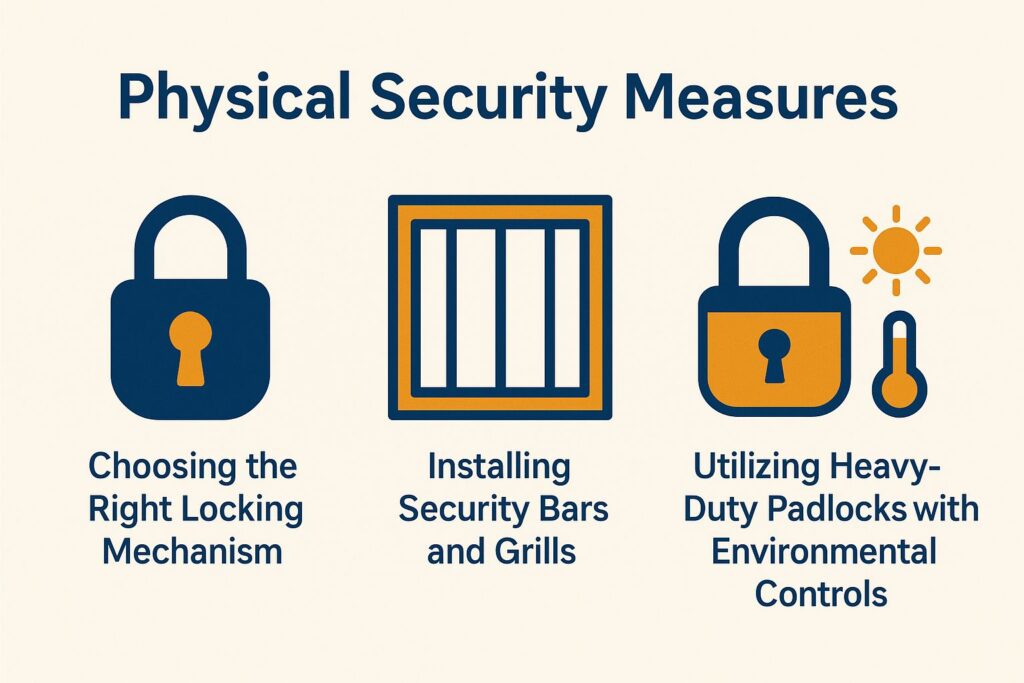
Choosing the Right Locking Mechanism
Choosing the right lock, like a strong padlock or an electronic lock, is important for securely locking your container.
🔒 Heavy-Duty Padlocks
Cost: $25-75
Security Level: ⭐⭐⭐⭐☆
Closed-shackle designs resist cutting. Look for hardened steel construction and weather-resistant coatings.
🔐 Smart Locks
Cost: $150-400
Security Level: ⭐⭐⭐⭐⭐
Remote access, usage tracking, and smartphone alerts. Require power source and internet connectivity.
🛡️ Lock Boxes
Cost: $75-200
Security Level: ⭐⭐⭐⭐⭐
Steel enclosures protect padlocks from cutting tools. Essential for high-risk locations.
Installing Security Bars and Grills for Container Protection
Adding security bars or grills strengthens the container’s physical protection and discourages break-ins.
- To install security bars or grills effectively, start by selecting durable products like the MidWest Air Technologies or Grizzly Security Products, which range from $200 to $500 for professional installation.
- Start by measuring the exact size of the window or door openings. Then, using a drill, secure the bars or grills with the included brackets, ensuring they are aligned and firmly attached.
- For a DIY approach, consider investing in a high-quality set of tools, including a torque wrench and drill bits, which can cost around $100.
Following these steps improves the safety of your container and enhances its appearance, helping to keep the site secure and stable.
Selecting Heavy-Duty Padlocks for Maximum Security
Using strong padlocks like the ABUS 83/55 can greatly improve your container’s protection against tampering and theft.
To get the best security, choose padlocks made from hardened steel and with a steel shackle for extra strength. The ABUS 83/55 has a 55mm body and locks on both sides, providing strong security.
Make sure the shackle is completely locked when installing, and think about adding extra security features like a hasp or a strong latch.
For optimal security, regularly inspect the padlock for wear and tear, replacing it as needed to maintain high security standards.
Technological Security Solutions and Secure Storage
Using technology for security can strengthen the safety of your steel storage container, providing improved functions and the ability to monitor from a distance, including operational security and documentation. This approach aligns with the principles outlined in our analysis of Shipping Containers vs. Traditional Sheds and their security features.
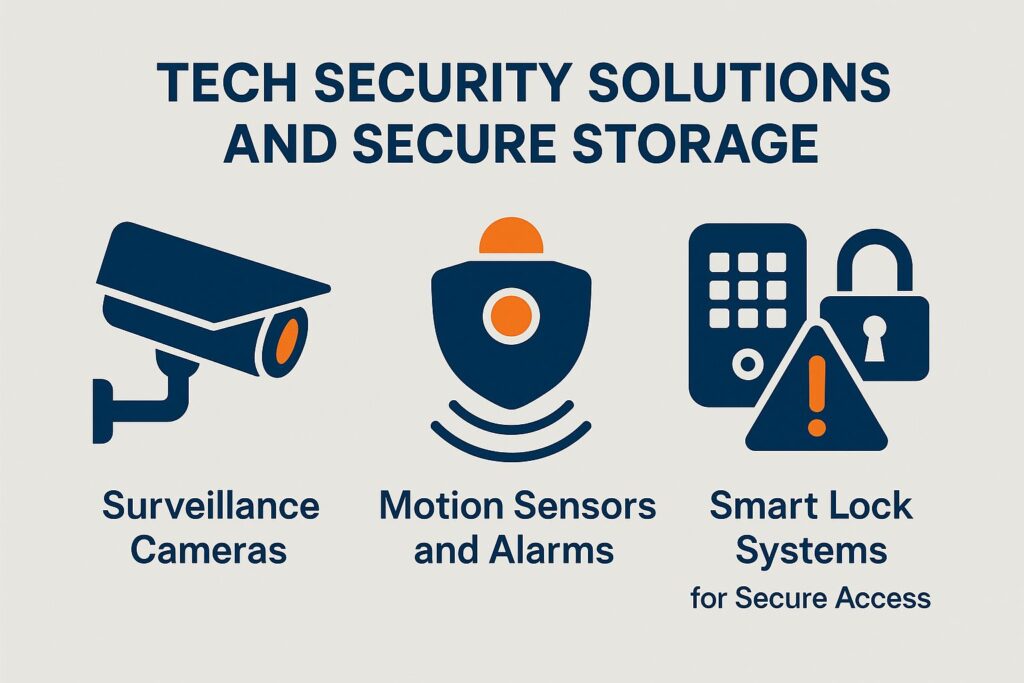
Surveillance Cameras for Site Audits
Putting up security cameras can help prevent theft and capture important video for recognizing security issues. You can purchase options like the Ring Spotlight Camera for less than $200.
For complete security, think about using multiple protective measures. Start by installing a Ring Spotlight Camera for outdoor monitoring, then supplement with indoor options like the Wyze Cam, which costs around $25 and offers HD video quality.
When installing, choose locations with high visibility and access points, ensuring cameras cover entryways and large areas. Make sure your system joins a safe Wi-Fi network, and update firmware often to improve security.
Set aside funds for cloud storage, as most companies provide plans costing less than $10 monthly for storing video files. This helps with managing data and checking security.
Motion Sensors and Alarms for Risk Mitigation
Motion sensors and alarms can alert you in real-time to unauthorized access attempts, enhancing your container’s security significantly, and supporting emergency plans.
To set up motion sensors properly, begin with the Ring Alarm Security Kit ($199), which offers strong features and simple setup.
Install the sensors near doors and windows, and set them up using the Ring app to adjust the settings to your preferences. Set sensitivity levels so pets don’t trigger false alarms.
Consider adding the Ring Video Doorbell for visual verification at your entrance. Setting it up usually takes under an hour, and you can pay about $10 each month for extra monitoring, which gives you real-time alerts.
Intelligent Lock Systems for Secure Entry and Safety Signs
Remote-controlled lock systems let you easily access and monitor from a distance, making them an excellent choice for securing your steel storage container and increasing liability protection.
The August Smart Lock ($149) is a dependable option. You can connect it to your existing deadbolt without removing any parts.
You can control it via the August app, enabling access control, remote locking, and notifications about who accesses your container.
Think about using locks like the Yale Assure Lock ($199) for improved security. It can connect with Google Assistant and Alexa smart home systems. Consider including security tips such as creating user access logs and monitoring containers to improve security.
Installation typically takes just 10-15 minutes and can be done with basic tools. This setup makes it easy to manage access permissions and provides security while considering local regulations and permits.
Environmental Security Considerations and Container Placement
When securing your steel storage container, environmental factors significantly impact overall security effectiveness. These considerations include theft protection strategies and weather resistance planning.

Choosing a Secure Location and Site Selection
Selecting a secure location for your steel storage container can significantly reduce risks associated with theft and vandalism.
Consider the following criteria when choosing the site for your container.
- First, prioritize visibility; placing it in an open area can deter potential thieves.
- Second, make sure delivery and pickup are easy, while keeping privacy from people walking by.
- Using hedges or fences can increase security without making the area feel cut off.
- More importantly, evaluate the lighting; a well-lit area is less likely to attract unwanted attention.
By combining these elements, you can significantly improve the safety of your container, including resource security and transport safety.
Using Fencing, Barriers, and Security Fencing
Installing fencing and barriers around your steel storage container increases physical security by restricting access and visibility.
Consider options like chain-link fencing, which costs between $10-$20 per linear foot, offering a durable yet affordable solution.
Wooden privacy fences cost about $15-$30 per linear foot. They look nice and offer good privacy.
For a stronger option, wrought iron fencing costs $25-$50 per linear foot and provides great durability and style.
Make sure your security fencing is at least 6 feet tall to prevent climbing, and use concrete for a stable base. Consider container modifications for additional security.
Choose a material based on your budget and desired security level.
Consider local building codes and HOA regulations when installing perimeter security, as requirements vary by location and intended container use.
Regular Maintenance, Checks, and Maintenance Tips
Regular upkeep and security inspections are necessary to keep your steel storage container and its contents safe over time.
Routine Inspections
Regularly inspecting your storage container can identify potential security issues before they turn into serious problems, and these inspections are essential for meeting regulatory requirements.
To carry out thorough checks, focus on five key areas:
- The container locks and hinges should operate smoothly and securely;
- Check for visible signs of rust or damage to the exterior;
- Verify that the seals are intact to prevent moisture entry;
- Inspect the interior for signs of pests or mold;
- Make sure the container is secured well to prevent it from falling over.
Schedule these checks every three months, and do them monthly when usage is high or the weather is poor. Use maintenance checklists for efficiency.
Using a checklist can help keep things consistent and make sure no important part is missed.
Updating Security Measures
As security risks change, it is essential to upgrade your security practices to keep your steel storage container safe, including theft prevention measures and emergency response planning.
- Start by doing regular security checks and security training to find weaknesses.
- Think about installing CCTV cameras for real-time viewing and alerts. Use smart locks like the August Smart Lock for accessing without keys to improve how you handle containers.
- Staying informed is equally important; subscribe to security newsletters like Krebs on Security or follow cybersecurity blogs to receive updates on emerging threats.
- Join online groups like Reddit’s /r/cybersecurity to exchange knowledge and good practices. These proactive steps will help you stay ahead of potential risks.
Frequently Asked Questions About Container Security
What is the most secure lock for a shipping container?
Disc padlocks with closed-shackle designs offer the highest security for shipping containers. The ABUS 20/70 disc padlock and Master Lock 6271 provide excellent cut-resistance. For maximum security, combine a high-quality padlock with a welded lock box that prevents access to cutting tools.
How do you theft-proof a shipping container?
Theft-proofing requires multiple security layers:
- Physical barriers: Heavy-duty locks, lock boxes, and security bars
- Deterrent systems: Motion-activated cameras, LED lighting, and alarm systems
- Anchoring: Secure containers to concrete foundations with twist locks
- Location strategy: Place in well-lit, visible areas with restricted access
- Documentation: Inventory tracking and insurance coverage
How much wind can move a shipping container?
An empty 20-foot container can shift in winds as low as 50-60 mph, while 40-foot containers are more stable but can move in 75+ mph winds. Loaded containers are significantly more stable. Always anchor containers with twist locks or ground anchors in areas prone to high winds or severe weather.
What security measures are required for storage containers?
Requirements vary by location and use, but common security standards include:
- Commercial use: Heavy-duty locks, lighting, and often surveillance systems
- Residential areas: Basic padlocks may suffice, but check HOA requirements
- Industrial sites: Multi-layer security with alarms, cameras, and access control
- Insurance compliance: Many policies require specific lock types and security measures
How much does container security cost on average?
Basic container security starts around $100-200 for quality locks and lighting. Complete security systems range from $500-2,000+ depending on features:
- Basic setup: $100-300 (padlocks, lock box, motion light)
- Standard security: $300-800 (adds cameras, better lighting)
- Premium systems: $800-2,000+ (smart locks, monitored alarms, professional installation)
These security investments typically pay for themselves within the first prevented theft incident, making professional container security systems a cost-effective choice for valuable storage applications.
Final Thoughts on Container Security
Putting security features on your steel storage container safeguards your belongings and helps you feel at ease. Container safety features like GPS tracking can also be useful.
Begin by installing a durable lock, such as a padlock with a hardened steel shank, which can resist cutting and prying. Consider adding a motion-activated security camera to monitor the container remotely.
Cameras such as the Ring Spotlight Cam provide both surveillance and lighting, enhancing security. Reinforce the container with anti-theft bolts, which are harder to tamper with.
If feasible, position the container in a well-lit area or behind a privacy fence to deter intruders, considering container placement for optimal security. Following these steps will make your security much stronger. Think about fire safety with fire extinguishers and follow your insurance policies.
About the Author
Ethan Cole is a business growth advisor and serial entrepreneur with over two decades of hands-on experience helping startups and small businesses thrive. With a background in finance and operations, he’s led multiple companies from early-stage concepts to multi-million-dollar exits. Ethan specializes in scaling strategies, cost reduction, and building systems that support sustainable growth. As a content contributor for Kwote Advisor, he shares practical insights to help business owners make smarter decisions when launching, managing, and expanding their ventures.


